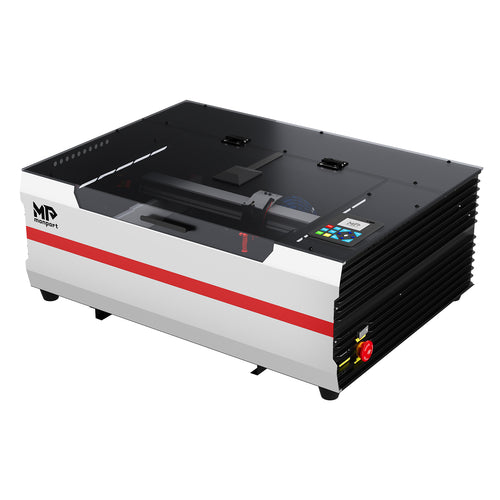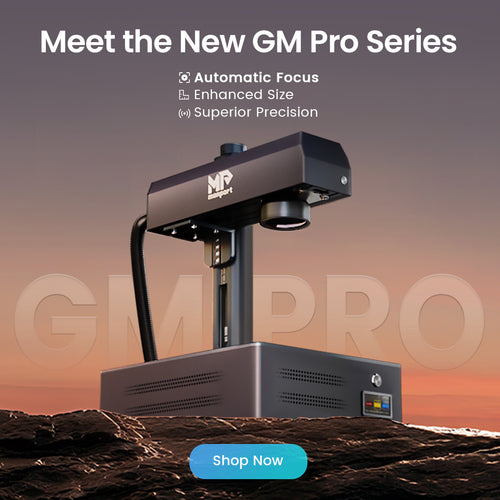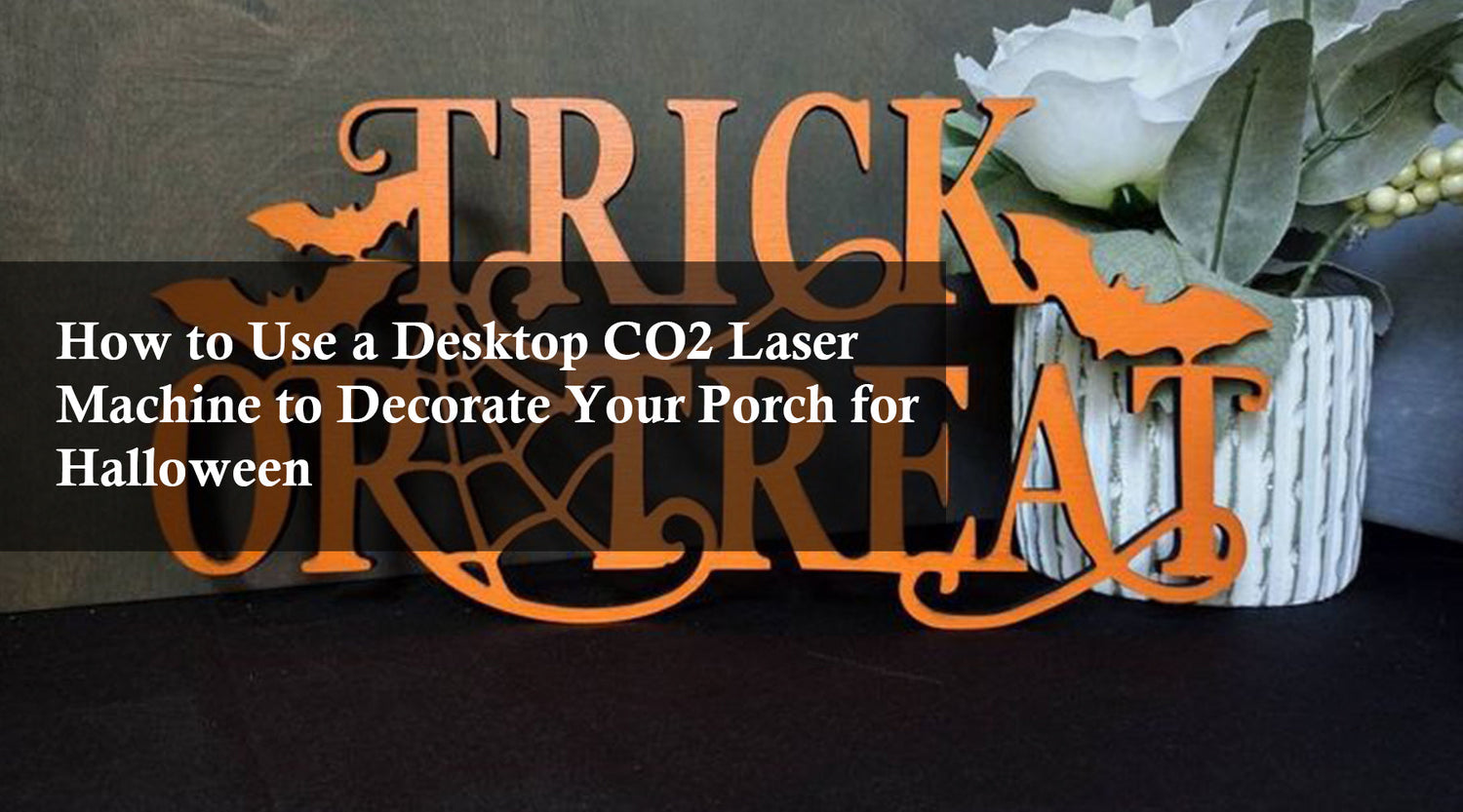Monport GQ 50W (7.9" x 7.9") Fiber Laser Engraver & Marking Machine with FDA Approval - Machine
Unlock Big Savings at Monport Laser! Use code BESTMP10 at checkout for an exclusive discount – Click here to shop now!
Choosing the Right Laser Engraving Tool for Metal
When venturing into the world of laser metal engraving, selecting the appropriate laser engraving tools metal and laser metal cleaner is crucial. Here are key factors to consider when planning for metal etching laser:

- Metal Type: Different metals react differently to laser engraving. Consider the type of metal you'll be working with most frequently. For example, some laser engravers are better suited for softer metals like aluminum, while others can handle tougher materials like steel.
-
Desired Outcome: Do you need deep engravings, intricate details, or color marking capabilities? The laser's power output and wavelength will determine the depth and detail achievable. For finer lines and color marking, a MOPA fiber laser with its short, controlled pulses is a superior choice, particularly for metal etching laser applications.
- Workspace and Budget: Laser engravers come in various sizes and price ranges. Consider your available workspace and budget when making your selection. Desktop models are ideal for smaller projects and offer a cost-effective entry point, while larger laser cutters can handle bigger metal sheets and thicker materials.
Popular Laser Engraving Tool for Metal
- CO2 Laser Engravers: A widely used and readily available option, CO2 lasers excel at engraving non-metals and some coated metals. They offer a good balance of affordability and functionality, but may not be ideal for deep engravings on bare metal surfaces.
-
Fiber Laser Engravers: Fiber lasers have emerged as the preferred choice for metal engraving due to their exceptional power density and beam quality. They deliver precise markings, minimal heat impact, and are suitable for a broader range of metals, including bare and coated surfaces. MOPA (Mode-locked Pulsed Amplifier) fiber lasers, with their ability to control pulse duration, offer even finer details and color marking capabilities on certain metals. These are also widely chosen for metal etching laser projects that demand crisp detail.
Additional Considerations:
- Ease of Use: Look for a laser engraving tools metal with user-friendly software and clear instructions. Consider options with autofocus features to streamline your workflow.
- Safety Features: Laser engravers involve high-powered beams. Ensure the tool has safety features like an enclosed workspace, fume extraction system, and interlock switches to protect users.
- Maintenance Needs: Regular maintenance is essential for optimal performance. Choose a laser engraver with readily available replacement parts and a reputable manufacturer that offers support.
Beyond the Tool: How to Clean Laser Engraved Metal
Once you've created your masterpiece with your chosen laser engraving tool for metal, the next step is to ensure its lasting beauty with a laser metal cleaner. Here are effective methods to clean laser engraved metal:

- For Light Dust and Debris: A gentle touch is key. Use a soft microfiber cloth or compressed air to remove any light dust or debris left behind from the engraving process.
- For Stubborn Residue: If a bit more cleaning power is needed, try a mild soap solution with a soft cloth. Rinse the surface thoroughly with clean water and dry it completely to prevent watermarks.
- For Delicate Surfaces: For polished or anodized metals, opt for a non-abrasive cleaning agent specifically formulated for the material. Always follow the manufacturer's instructions for cleaning delicate surfaces.
Important Tips on How to Clean Laser Engraved Metal
- Avoid Abrasive Materials: Never use harsh chemicals, abrasive scrubbers, or metal cleaning tools as they can scratch or damage the engraved surface.
- Test in an Inconspicuous Area: Before applying any cleaning solution to the engraved area, test it on an inconspicuous part of the metal to ensure it doesn't cause any discoloration.
- Maintain Proper Ventilation: When using any cleaning solutions, ensure proper ventilation in your workspace.
Maintaining the Magic: How to Clean Your Fiber Laser
Your trusty fiber laser engraver is the workhorse behind your stunning metal creations. But just like any hardworking tool, it requires proper maintenance to ensure optimal performance and longevity. A crucial aspect of this maintenance is keeping the fiber laser lens clean for metal etching laser.
What is the Fiber Laser Lens?

The fiber laser lens plays a critical role in focusing the laser beam precisely onto the metal surface during the engraving process. It's a delicate component made from specialized optical materials. Contamination on the lens can significantly impact engraving quality by scattering the laser beam, resulting in weaker markings, uneven lines, or even permanent damage to the lens itself.
Why is it Necessary to Clean the Fiber Laser Lens?
Regular cleaning of the fiber laser lens is essential for several reasons:
- Maintaining Engraving Quality: A clean lens ensures a focused and powerful laser beam, leading to crisp, precise engravings.
- Protecting the Lens: Contamination can act like a magnifying glass, intensifying the laser beam and potentially causing damage to the lens coating.
- Extending Laser Life: Proper lens care contributes to the overall lifespan of the fiber laser source.
How to Clean Your Fiber Laser Lens
Safety First: Always prioritize safety when working with your laser engraver. Ensure the machine is turned off, unplugged, and completely cool before attempting any cleaning procedures. Wear appropriate safety glasses designed for laser wavelengths.

Cleaning Materials:
- Lint-free swabs: Use high-quality, laboratory-grade swabs specifically designed for cleaning optical components. Avoid cotton swabs, as they can leave behind lint.
- Acetone or Industrial Alcohol: These solvents are effective for removing dust, oil, and other contaminants. Opt for reagent-grade or ACS-grade solvents for optimal purity.
- Compressed Air (Optional): A can of compressed air can be helpful for blowing away loose dust particles before wiping the lens.
Cleaning Process:
- Blow Away Dust: If using compressed air, hold the can upright and gently blow away any loose dust particles from the lens surface.
- Dampen the Swab: Moisten a lint-free swab with a minimal amount of acetone or alcohol. Avoid saturating the swab to prevent dripping.
- Wipe the Lens: In a single, gentle motion, wipe the lens surface in a circular pattern from the center outwards. Use a fresh swab for each wipe to avoid spreading contaminants.
- Inspect and Repeat: Visually inspect the lens for any remaining residue. If necessary, repeat steps 2 and 3 with fresh swabs until the lens is clean.
- Air Dry: Allow the lens to air dry completely before restarting the laser engraver. Never use paper towels or tissues to dry the lens, as they can leave behind scratches.
Additional Tips:
- Clean Regularly: The frequency of cleaning depends on your usage patterns. For regular use, consider cleaning the lens weekly or bi-weekly. If you work with dusty or oily materials, more frequent cleaning might be necessary.
- Consult the Manual: Always refer to your laser engraver's user manual for specific cleaning instructions and recommendations. Some manufacturers might have specific cleaning solutions or procedures for their lenses.
F-Theta Lens for Fiber Laser Engraving Tool for Metal

The F-Theta lens is another important component of some fiber laser engravers. It collimates (straightens) the laser beam and focuses it onto the engraving plane at a constant focal length, regardless of the scanning distance. While the cleaning procedure is generally similar to the fiber laser lens, some manufacturers might recommend specific cleaning solutions or techniques for the F-Theta lens. Refer to your user manual for detailed instructions.
Remember: For tasks like replacing the F-Theta lens or any other complex maintenance procedures, consult a qualified technician or your laser engraver manufacturer for proper guidance.
By following these tips and maintaining a clean fiber laser lens, you can ensure your laser engraving tools metal operates at its peak performance and delivers exceptional results for years to come. With the knowledge to choose the right laser engraving tool for metal, how to clean laser engraved metal pieces, and maintain your fiber laser, you're well-equipped to create stunning and permanent works of art on metal. Whether you are engraving deep or doing laser etching on metal for fine designs, consistent maintenance ensures the best outcome.
Frequently Asked Questions (FAQs)
1. What type of laser engraving tool is best for metal?
Fiber laser engravers are generally the best choice for metal because they deliver high precision, minimal heat distortion, and work effectively on both bare and coated surfaces. For finer details and color marking, a MOPA fiber laser is ideal.
2. Can CO2 laser engravers engrave directly on metal?
Standard CO2 lasers are not very effective for direct engraving on bare metals. They can, however, engrave coated or anodized metals. For deep engraving on bare metals, fiber laser engravers are more suitable.
3. How do I properly clean laser engraved metal surfaces?
Start with a soft microfiber cloth or compressed air for dust removal. For residue, use a mild soap solution and rinse thoroughly. For polished or delicate surfaces, use non-abrasive cleaners specifically designed for metals. Always avoid harsh chemicals or abrasive tools.
4. Why is it important to clean the fiber laser lens regularly?
A clean lens ensures that the laser beam remains sharp and powerful, which directly affects engraving quality. Dirty or contaminated lenses can cause weak markings, uneven lines, or even permanent lens damage. Regular cleaning also extends the lifespan of your machine.
5. How often should I clean the fiber laser lens and F-Theta lens?
The frequency depends on how often and in what environment you use your machine. For regular use, weekly or bi-weekly cleaning is recommended. If you’re working with dusty or oily materials, more frequent cleaning may be required. Always check your user manual for manufacturer-specific guidelines.
Conclusion
Laser engraving tools provide a powerful and versatile way to personalize and enhance metal objects. Choosing the right tool based on your metal type, desired outcome, and budget is crucial for achieving stunning results. By understanding the cleaning techniques and using gentle solutions, you can ensure your laser-engraved metal pieces retain their vibrant markings for years to come. With the knowledge from this guide, you're well on your way to unlocking the full potential of laser engraving for metal and creating beautiful, long-lasting masterpieces. Incorporating metal etching laser adds creative versatility and precision to all your projects.
Unlock Big Savings at Monport Laser! Use code BESTMP10 at checkout for an exclusive discount – Click here to shop now!










